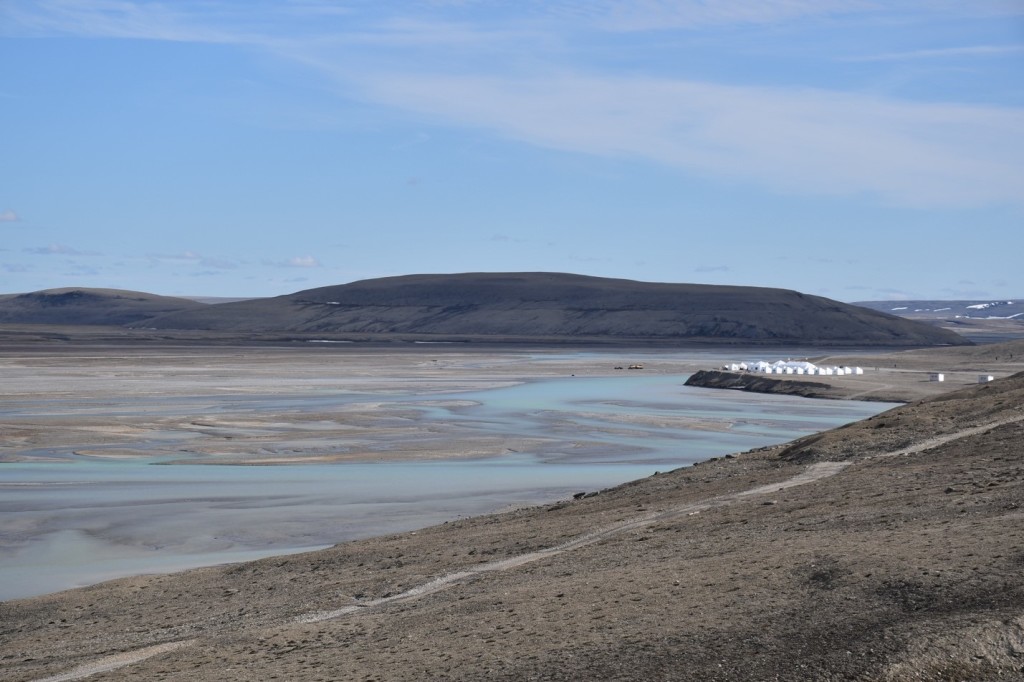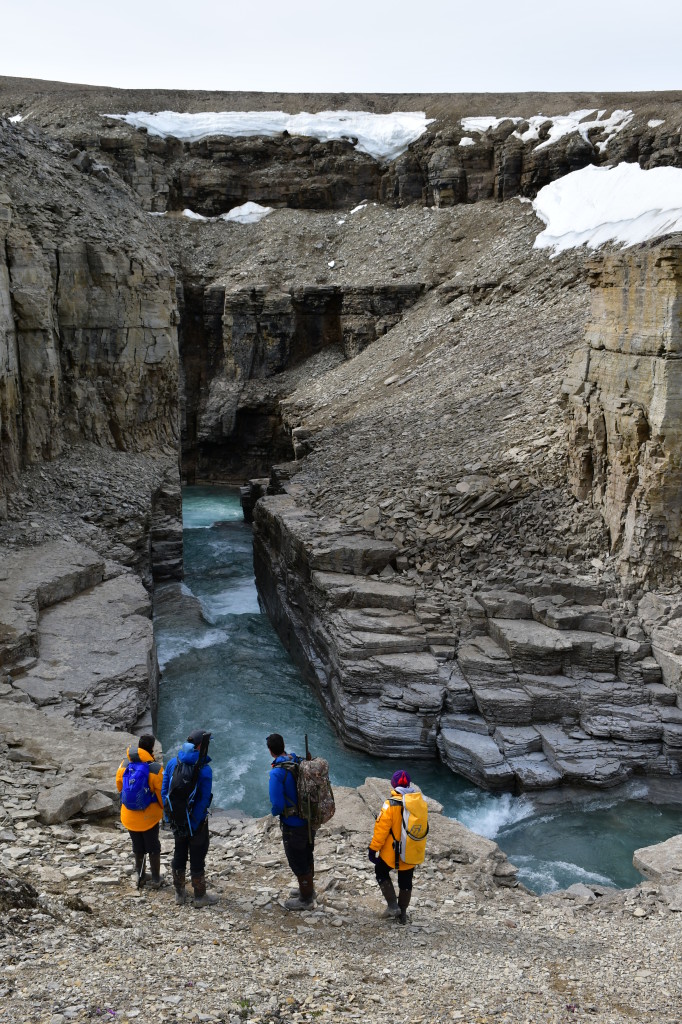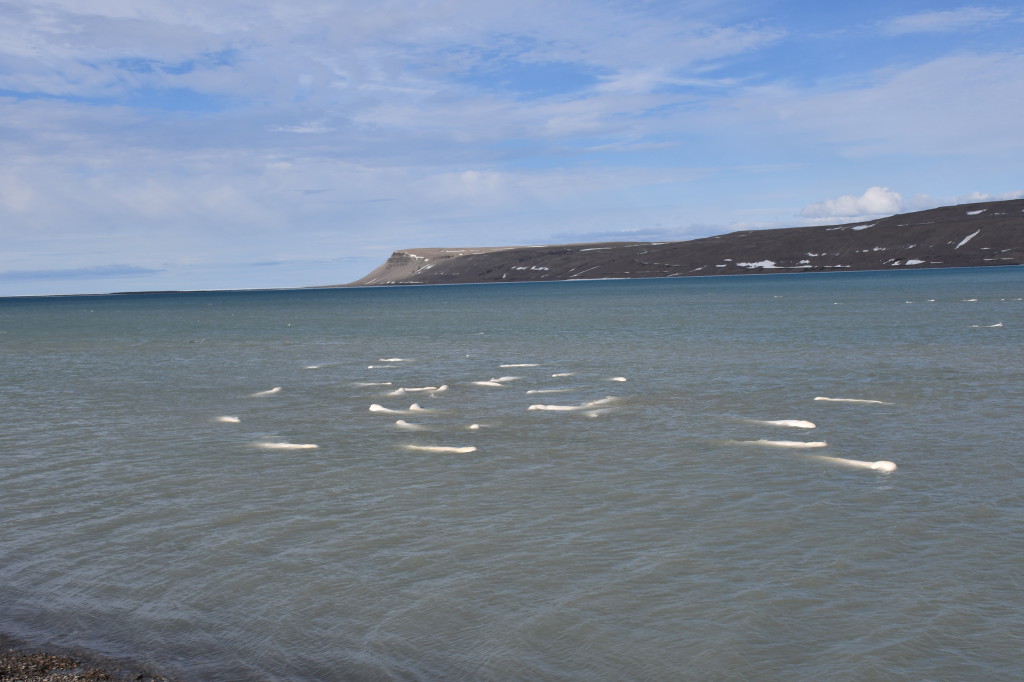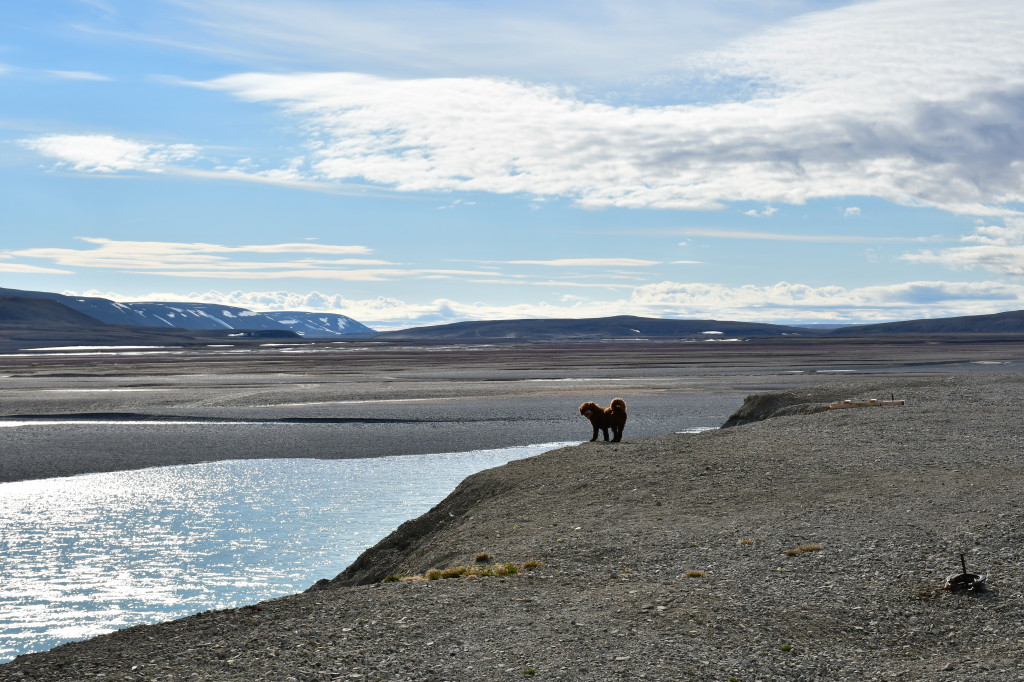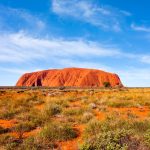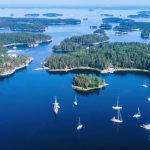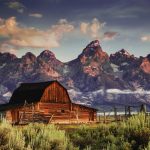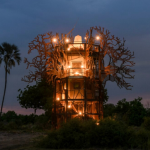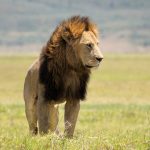By John Newton, AFAR Ambassador
In March 2016 I traveled to the north of Canada—Manitoba, and specifically the town of Churchill, on the edges of Hudson Bay. The trip was centered around a dinner at a fort once used by the Hudson Bay Company where the meal would, according to the plan, conclude with the luminous display of the northern lights.
Celestial phenomena don’t follow schedules set by human, and that night the famous lights did not dance across the skies. Still, Manitoba—like the meal itself—was dazzling in other ways. Having seen where the tree line ends and experienced the vast and open spaces of northern Canada and staring across frozen Hudson Bay, I wanted to see more. So when I was offered the opportunity to join Quark Expeditions on a trip to the Arctic Watch Wilderness Lodge on Somerset Island in Nunavut, I jumped at it. If Churchill felt like the end of the world, I wanted to see what sat some 1,000 miles to the north, beyond the Arctic Circle.
Even just reaching the start of the trip required three flights: From New York to Calgary to Yellowknife in the Northwest Territories. I had a day to explore Yellowknife, dining on pan-fried trout for lunch at Bullocks’ Bistro and visiting the excellent (and free) Prince of Wales Northern Heritage Centre. That night our group from Quark gathered at our hotel to be fitted out with muck boots and parkas, and then the following morning we departed on the final leg of our journey aboard an ATR, bound for Somerset Island.
Our goal was the Arctic Watch Wilderness Lodge, perhaps more accurately a camp as all the accommodations are in tents, run by Richard Weber, who has made several trips to the North Pole; his wife, Josée Auclair, a fellow polar explorer, and their two sons.
The enormous island is roughly the size of Vermont, yet it is uninhabited except for the employees and guests of the lodge which operates only in the summer. One plane arrives each week, bringing in a new group of travelers with Quark (ours included 23 people), and then picking up the previous group and returning them to Yellowknife. The flight also carries in all of the camp’s supplies, while flying out its trash.
Simply getting to the lodge from the gravel landing strip was an adventure. We rafted across a small stream and then walked with the camp’s polar bear guard dog, Fury, leading the way. The guest rooms are two rows of tents, heated and with electricity, on a bluff overlooking Cunningham Inlet. Tents where meals are served and another that is sort of a great hall— complete with couches and blankets, board games, and books on Arctic history—round out the camp.
We didn’t spend much time there, however, at least during the day. At 8 a.m. we would assemble as several of the camp’s guides presented several activities—hiking, kayaking, ATV trips. After breakfast, we’d depart on our excursions. (An aside about the breakfast, and all the meals: I would have been content, and was expecting, freeze-dried eggs and when I bit into the melon they served at breakfast, I expected a hearty, and disappointing, crunch. Instead it was perfectly ripe, while lunches included thermoses of homemade soup, freshly baked rolls, and artisanal dried meats. Every dietary requirement was accommodated. You may be on the edge of the world, but you aren’t roughing it at Arctic Watch).
I mostly wanted to see the landscape and know what the world looked like at 74° North, some 500 miles north of the Arctic Circle. The list of things I wanted to see or experience at the lodge was relatively short: the midnight sun, belugas, polar bears, and musk oxen. If I was able to spot an arctic hare or fox, I’d consider those bonuses.

The midnight sun was, of course, the easiest to check off the list. While I was at the camp in mid-July, the sun came closest to the horizon at 1:16 a.m. but still remained significantly above the sea. Eye masks were provided in each tent, though after a day hiking and a satisfying dinner, I never found it hard to sleep even with the sun shining.
The belugas were also relatively easy to spot. The ice had begun to break up on the Cunningham Inlet, where some 2,000 or so beluga gather each summer, drawn to the relatively warm waters where the Cunningham River meets the sea. Sitting on the shoreline and hearing their chirps and kayaking among them were experiences that justified the journey alone.
Getting close to polar bears and musk oxen was more challenging then I understood before the trip, but on the first day our guide taught us how to crouch and move as a compact group towards a polar bear, approaching it from upwind. We were within 100 meters before he stood, took a look at us, rolled on his back like a dog looking for a belly rub, and then wandered off. The musk oxen were more skittish, but an ATV expedition on another day brought us within a few hundred meters of these majestic Arctic animals with their dreadlock-like coats.
On our final day, while I was waiting for the rest of our group before heading out on a kayak trip, a hare suddenly appeared out of nowhere, roughly five meters away. We exchanged looks, before one of the camp’s dog spotted him as well and they both bolted off (the hare won this race). It felt like a fitting conclusion—I’d seen more than I had hoped for and could begin the journey home.
Interested in learning more about John’s journey? Read more about it on AFAR.com, and check out Quark Expeditions Arctic Watch Wilderness Lodge itinerary.
John has almost 20 years’ experience in travel, both on staff at Conde Nast Traveler and Travel + Leisure and writing for other magazines, newspapers, and websites. He is AFAR’s Branded Content Advisor and the founder of Signal Custom Content, a travel branded content consulting company. In addition to his trip to Nunavut, his 2018 travel plans include Austria, El Salvador, Guanajuato in Mexico, Hungary, Vancouver, and Vietnam.

